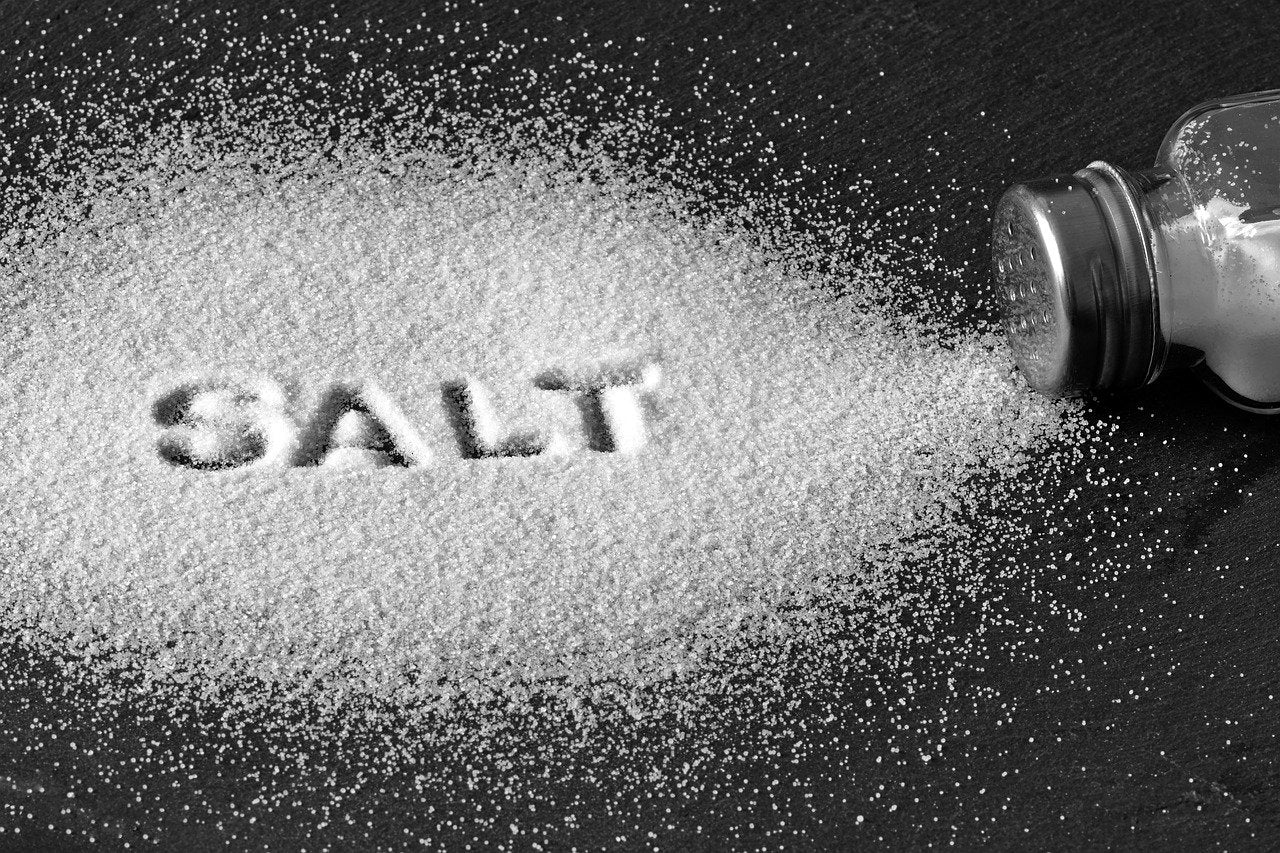
The Problems With Salt
Salt is something that you simply cannot live without.
The sodium in salt is of vital importance for maintaining electrolyte balance, and as I’ve been telling you for a few years now, if you want to have a healthy heart, and unimpaired cognition, then you want your electrolyte levels to be optimally balanced.
But, back to salt.
Not only is it great for your health and critical, it actually is an amazing additive for getting your food to taste better.
Imagine potato chips with no salt.
Or imagine a steak just plain…
Those options don’t sound all that appealing, do they?
Which is why many of us take salt for granted.
Several decades ago there was a misguided attempt to get people to watch their salt intake in order to protect their health. The idea was that somehow salt consumption was directly responsible for the myriad of cardiovascular diseases that were presenting themselves in our populations.
We know now that salt wasn’t the main issue (though it is possible to overdo it) and that other dietary and lifestyle factors were causing the health issues.
And so today, I want to talk about the main issues with salt that you may have to encounter (and rectify).
Let’s get into it.
The Various Dangers of Salt Explained
I want to make it clear that you can definitely overdo it with salt, meaning, that on its own salt can be problematic.
But, most people don’t need to worry about consuming too much salt. And I’ll provide some guidelines as to the right amount to get depending on gender, age, and activity level later on.
Instead, many of the various dangers of salt have to do with what comes inside the bag (or box) of salt you purchase.
1 - They Contain Heavy Metals:
Many types of salt contain heavy metals.
That’s because they’re often mined from deep in the ground and are bound to be affected by chemicals. In fact, it’s virtually impossible to get away from heavy metals if you eat natural products, so you may as well accept that they are there.
However, some sources of salt have higher levels of metals like cadmium, or lead. This is why if you’re going to choose salts that have lower amounts it’s wise to use something that has been tested for low metal levels.
A 2020 study by Nutrition Research Australia tested thirty-one samples of pink salt in Australia for nutrients and non-nutritive minerals. All but one sample met the food safety standards set by Food Standards Australia New Zealand (FSANZ) and the nutrient reference value (NRV) for metal contaminants. The exception was a sample from Peru that had lead levels above the maximum permissible limit. The study found other contaminants, like aluminum and lead, but within safe limits for all other samples. Lead author Flavia Fayet-Moore emphasized that while heavy metal levels varied and were generally higher than in white salt, the study's intent was to educate consumers on making informed, healthful choices rather than incite fear.
It’s hard to get a list of “good and bad” suppliers, but knowing you can choose some that don’t have as much heavy metal content is preferable.
2 - They May contain Microplastics:
Microplastics are ubiquitous in today’s world, mainly because we depend so much on plastic in our daily lives.
These particles, which are less than 5 millimeters in size, have been found in various types of salt, including sea, rock, and lake salts from around the world.
These particles originate from plastic debris and products like microbeads. While the health implications of ingesting microplastics are still being studied, potential risks include inflammatory responses and chemical exposure. Regulatory measures are currently lacking, but ongoing research aims to better understand the contamination and its effects. Choosing salt from less contaminated sources and reducing plastic waste are crucial steps in addressing this issue.
3 - They Can Be Overly Processed:
Part of what makes many sources of salt good for you is that there are naturally occurring chemicals/nutrients in them.
When salt is made for consumption (think ordinary table salt), many of those chemicals are removed and additionally, problematic chemicals can be added.
Table salt undergoes extensive processing to eliminate minerals and impurities, resulting in a product primarily composed of sodium chloride. Unfortunately, this process strips away beneficial trace minerals that naturally occur in salt, leaving behind a chemically refined product.
The refining process uses chemicals like chlorine and sulfuric acid, which may leave trace amounts in the final product. Table salt is often fortified with iodine to prevent health issues like thyroid disorders and childhood learning disabilities, but managing iodine intake can be difficult for individuals with thyroid conditions.
Table salt also contains 97-99% sodium chloride, with the remaining percentage made up of anti-caking agents to prevent clumping. Some anti-caking agents contain harmful compounds like aluminum, which is suspected to contribute to neurodegenerative diseases such as Alzheimer's.
This is why a less refined salt is often preferable.
4 - There Are Ethical Concerns With Salt Manufacturing:
This is something you probably never thought about, but many companies rely on less than ethical practices to get their salt.
As a Christian, I try my best to make informed choices around my food when I can. Manufacturers of Himalayan Pink Salt are some of the worst offenders as many of their mines are in Pakistan where they use slave labor to get their salt.
You want “Fair-Trade Certified” Pink salt if you decide to use Himalayan salt.
Some other salts have ethical concerns, but none as much as Himalayan pink salt which has swept the nation if not the world as being incredibly popular.
So What Salts to Get?
I won’t make any brand recommendations, but I will say this…
You may have to spend a little bit extra to get a high quality salt.
Which isn’t terrible when you consider how good salt is for you.
I recommend ”Fair Trade” if you’re looking for mined salt.
Look for salt that provided certifications on heavy metal loads.
Avoid processed table salt, or salt fortified with iodine (unless you have a physician working with you and making that recommendation).
And, strive to get at least 2-3 grams a day, and if you’re active, or are a larger individual, you can push that amount to 4-6 grams (or even more). This is backed by research.
Hopefully this information will help you be sure to get enough salt, and avoid the kinds of salt that may have harmful ingredients in it.



